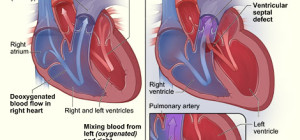Psoriasis and Psoriatic Arthritis go hand in hand, roughly 15% of the time. Psoriasis is a skin condition that causes inflammation and scaling. In a process called cell turnover, the body’s skin cells grow deep within the skin and slowly rise to the surface, usually taking a month’s time. However, in psoriasis, the cells rise too quickly and pile up on the surface, usually taking a matter of days. Psoriatic Arthritis is a form of arthritis that affects those with psoriasis, or a genetic history of psoriasis. It can result in spondylitis and Enthesitis, two conditions that affect the joints and tendons. With these diseases, early diagnosis can save your joints and ligaments from damage. While there is no cure, currently, for psoriasis or psoriatic arthritis, you can treat the symptoms and keep the manageable.
Psoriasis and Psoriatic Arthritis: the connection
 Psoriasis causes thick, red skin with silvery scales to rise in patches on the body. They can be found on the knees and other parts of the legs, as well as lower back, palms, soles, face, scalp, elbows, fingernails, genitals, toenails and inside the mouth. The problem starts in the immune system, affecting T cells primarily. They are put into action by mistake, becoming so active that they set off various other immune responses, resulting in swelling and faster skin turnover. Certain things, like infections, the weather and stress, can cause the condition to worsen. Some medications can cause the condition to worsen as well, so it is important to figure out what works the best for these diseases.
Psoriasis causes thick, red skin with silvery scales to rise in patches on the body. They can be found on the knees and other parts of the legs, as well as lower back, palms, soles, face, scalp, elbows, fingernails, genitals, toenails and inside the mouth. The problem starts in the immune system, affecting T cells primarily. They are put into action by mistake, becoming so active that they set off various other immune responses, resulting in swelling and faster skin turnover. Certain things, like infections, the weather and stress, can cause the condition to worsen. Some medications can cause the condition to worsen as well, so it is important to figure out what works the best for these diseases.
Psoriatic Arthritis
This form of arthritis tends to target those with psoriasis, typically after psoriasis has developed. It can show various symptoms. One will definitely experience joint pain, stiffness and intense swelling of the fingers. Psoriatic arthritis can also affect the vertebrae in your spine, the lower back and your feet. Spondylitis, for instance, causes pain in the back or neck, limiting your ability to bed. Enthesitis, on the other hand, causes tender points where ligaments and tendons join with your bones. This leads to plantar fasciitis, pain in the sole of your foot, and Achilles tendinitis, pain in the back of your heel. Pain can also crop up in the elbows and other areas of the body. Both conditions have their flare ups, as well as times of remission.
Treating them
You can treat the symptoms of each disease separately, though it is simpler to find a method that works with them both. The treatments you may be prescribed depend on the level of pain you feel. For instance, if your pain levels are mild, you might only receive treatment during flare ups, and stop treatment once the pain is gone. There are several types of treatments available, from NSAIDs to surgery.
NSAIDs (Non-Steroidal Anti Inflammatory Drugs)
These may be used for the initial treatment of inflammation and joint pain. NSAIDs can include over the counter and prescription NSAIDs. You can often use ibuprofen or aspirin to reduce the symptoms, such as swelling and feverish areas. In some instances, however, the arthritis may not respond to them. That is when your physician might recommend disease modifying anti-rheumatic drugs.
Disease Modifying Anti-Rheumatic Drugs
DMARD is intended to relieve the more severe symptoms that can arise with arthritis. The prescription attempts to slow, or rather stop, the progression of Psoriatic arthritis, as well as put an end to the joint and tissue damage that occurs alongside it.
Biologics
Biological drugs can be prescribed for Psoriatic arthritis that hasn’t yet responded to the previous treatments. Biologics may be able to stop the damages and progression of psoriatic arthritis. It is generally given through an injection or an IV.
Anti-Tumor Necrosis Factor Agents
Anti-Tumor Necrosis Factor Agents are a class of drugs that have been used over the past decade to treat inflammatory diseases, like psoriasis, psoriatic arthritis and spondylitis. They target the TNF substance that controls and causes inflammation. There are 5 FDA approved anti-TNF drugs that can treat moderate to severe arthritic conditions, as well as alter the way the disease effects the body through inflammation, the gastrointestinal tract and skin.
Overall, there are many different treatments for these conditions that can slow or even halt the progression of each disease. Each depend on the severity of the disease, as well as your pain levels and how it affects your ability to live.
REFERENCES:
- A beginner’s guide to psoriatic arthritis. US National Psoriasis Foundation. Dr Ted Grossbart, Assistant clinical professor of psychology, Harvard Medical School.
- Psoriatic Arthritis: Causes, Signs, Diagnosis and Treatment http://www.consumerhealthdigest.com/joint-pain/psoriatic-arthritis.html
- Can You Treat Psoriatic Arthritis with Laser Therapy? http://kellyeverson.kinja.com/can-you-treat-psoriatic-arthritis-with-laser-therapy-1615642797







